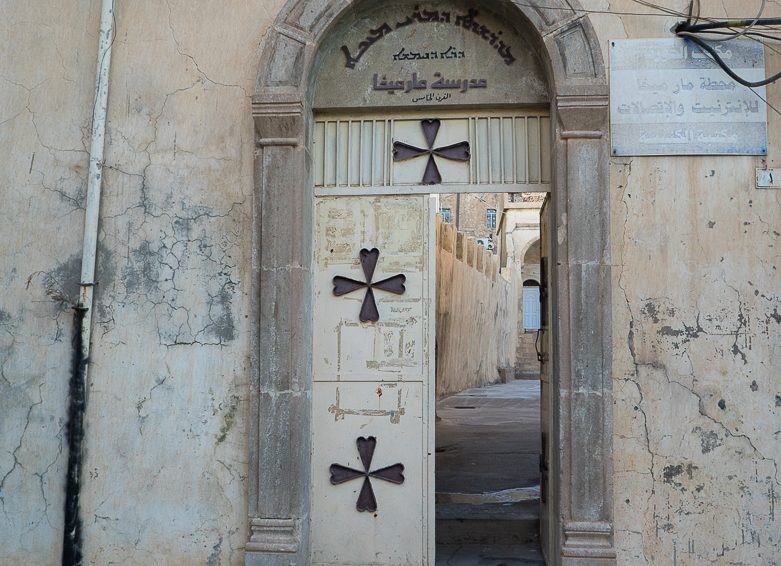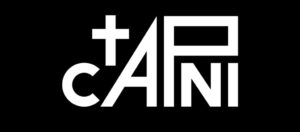About the town of Alqosh
Alqosh is the capital (center) of the sub-district of Alqosh which is within Telkeif district – Nineveh Province (governorate).
It is located 45 Km north west of Mosul and 35 Km south of Duhok.
Alqosh is one of the biblical cities in Mesopotamia (current Iraq). It is the town of Prophet Nahom.
It is a very famous ancient Christian town in Nineveh Plains.
Alqosh has adorned the Bayhidhra mountains for more than twenty-five centuries.
Alqosh traces its history back into the ancient Assyrian empire and perhaps even further. The earliest mentioning of Alqosh appears in the Assyrian King Sennacherib’s era 750 BC as evidenced by the mural inside Sennacherib’s palace that was discovered in Tel Kuyunjik (A Turkish word which means Sheep Hill) in Mosul. Behind this mural, the phrase “This rock was brought from Alqosh’s Mountain” is carved.
It is important to note that Alqosh has no river, it once relied on spring and well water, but It also has ravines with water from the mountains.
Similarly, to Iraqi Christians of the different regions and towns, many Alqoshnaye (i.e. people who belongs to Alqosh) families have immigrated outside of the country in huge numbers since the 1970s.
It is estimated that at least 40,000 Alqoshnaye immigrants and their 2nd and 3rd generations now live in the cities of Detroit, Michigan and San Diego, California.
Currently 1200 families, around 6500 persons, live in Alqosh.
They are all Christians and members of Chaldean Catholic Church.
Alqoshnaye speak Syriac language (eastern dialect) as mother tongue which is generated from the classic Aramaic spoken by Lord Jesus Christ.
It is the diocesan center of Alqosh Chaldean Catholic diocese which is composed of 8 parishes:
two parishes in Alqosh town (Mar Gewargis, Mar Qardagh), Jambour, Bandwaye, Batnaya, Mar Oraham, Baqofa, Telesquf and Sheikhan.
The current diocesan bishop is His Grace Bishop Mikhael Muqdasi who is originally an Alqoshian and resides in the bishop center in Alqosh.
The parish has currently 8 priests.
Moreover, Alqosh hosts the Monastery of Our Lady protector of the crops and the orphanage house which is operated by the monastery.
The Name Origin
Conflicting opinions appear pertaining to the name Alqosh. Some believe it derives from the Aramaic language and the word Alqoshtti, which means “God is my arrow”. Others interpret it as Alqoshtta, which means “God of justice”.
Some contend it belongs to the name AalQoun, father of Nahum the Alqoshian, one of the Old Testament prophets whose tomb still rests in Alqosh today.
The name “Alqosh” could also have originated from the Aramaic “Eil Qushti”, which means “The God of the Bow”. Meanwhile, in Aramaic language, rainbow is referred to as “Qeshta d’ Maran”, therefore, the meaning of the “Bow of Our Lord”, is possible as well.
Alqosh is known also as Yimma d’ Mathwatha (Mother of all Villages).
A number of sites within Alqosh still carry ancient Mesopotamian names, for example, Sainna Neighborhood means the Moon Neighborhood and Bee Sinnat is a plain area south of Alqosh. Within approximately 3 km to the west of Alqosh, lies the well-known ruin of Shayro Meliktha which is marked in the Iraqi ruins Map as a temple carrying a carving of Sennacherib aiming an arrow from his bow.
Shayro means king in ancient Assyrian language, and Malektha means Queen in Syriac.
So, Shayro Malektha is referring to King and Queen.
Prophet Nahum and Alqosh
Since its establishment, Alqosh was a place for worshiping whether for the local god El-Qustu or Judaism when various Hebrew peoples were brought by the Assyrian army during the eighth century BC.
AalQoun, father of Nahum, was the son of a Hebrew family among thousands whom the king Shelmenassar V, who reigned between 727 and 722 BC, brought to Alqosh. These Hebrews lived in peace with the Assyrians, the host community.
Nahom tomb is in a Jewish synagogue which is still in Alqosh. It was neglected after Jewish exodus from modern Iraq to Israel and its building was partially harmed due to decades of neglection and natural harm.
Recently, the tomb and synagogue building were restored through the efforts of Kurdistan government in coordination with international NGOs.
Christianity and Alqosh
Who doesn’t know about Alqosh, doesn’t know about Christianity in Iraq.
Who knows about Christianity in Iraq, knows, for sure, about Alqosh.
This is the brief way to introduce Alqosh as one of the very famous Christian towns in Iraq through out the history and in current time as well.
Alqosh is the town hosting Rabban Hormizd monastery.
Alqosh is the town hosting Prophet Nahum tomb.
Alqosh is the town where Church of the East patriarch resided and were buried.
Alqosh is the mother town of long list of Church fathers, scholars, poets, writers, and more.
Alqosh, as all the region, became a Christian community since early Christian centuries when the early Christian apostles evangelized Mesopotamia to Persia and Far East to Mongolia.
This was the beginning of the Church of the East, one of the oldest eastern churches.
Alqosh became an important town for Church of the East after the coming of Hirmiz the monk who carved out a monastery out of the mountains of Alqosh.
This abbey is called “Rabban Hormizd Monastery” and which was crafted in 640 AD at the outskirts of the Mountains of Alqosh. It was used as the Seat for many patriarchs of the Church of the East.
From this monastery came Yohannan Sulaqa, who decided to leave the mother church and joined the Roman Catholic Church in 1553 and established the Chaldean Catholic Church.
Before that, all of the inhabitants of Alqosh, like their brothers in other towns were part of the Church of the East.
By 1780, most of Alqosh accepted the union with the Catholic Church.
It is unfortunate and painful that the conversion from the mother Church, Church of the East, to the Catholic Church and unity with the Roman Church was accompanied by several actions that constituted a great loss for Eastern Christianity and its rich theological and literary heritage.
Hundreds of very ancient and rich context manuscripts were burnt and destroyed as the Catholic missionaries considered them “Heretical writings”.
The inscriptions on the tombs of the patriarchs who were buried in the Rabban Hormuz monastery were also vandalized.
Major attacks Throughout history
Alqosh has fallen victim to many calamities, most due to their oppressive Muslim neighbors and various overlords
Many attacks occurred after Alqosh started to house the abbey of Rabban Hirmizd, which was used as the Seat for several patriarchs, as it attracted the attention of several Muslims looking to harass their Christian neighbors.
In 1743 Alqosh became a victim to the destructive acts of their Persian overlord Nader Shah.
According to the testimony, written in a letter by Father Habash Bin Jomaa from 1746, he describes:
“… first they attacked Karamles and stole its Chaldean peoples’ valuables and kidnapped many of its children and women. They then did the same to the inhabitants of Bartilla they killed many of her men, stole their valuables, and also kidnapped its children and women. They did the same to the people of Tel Keppe and Alqosh, however, many of those two neighboring villages took refuge at the Monastery of Rabban Hirmizd. There they were surrounded by the soldiers of Nader Shah who attacked them and then massacred them. There they committed horrendous crimes that I just don’t have the stomach to describe!”
In 1828, Alqosh was attacked by the army of Mosa Pasha, the governor of Amadeya, who was instigated by some of his Muslim subjects to attack the Rabban Hirmizd Monastery which he did. His army arrested and imprisoned several monks and priests and caused tremendous damage to the monastery.
In 1832, Alqosh was attacked by the Kurdish Governor of Rowanduz, nicknamed “Merkor” whose hatred for Chaldeans is well known. He killed over 400 of its Chaldean inhabitants. Merkor attacked Alqosh again on 15 March 1833 and killed another 172 of its men, not counting children, women, and strangers (according to church records).
In 1840, Alqosh was attacked by the brother of Merkor, Rasoul Beg, who surrounded it for several months after which he set on fire the Rabban Hirmizd Monastery and stole over 500 of its valuable books.
Recent attacks
After the fall of the previous regime and the security vacuum that followed the fall, Christians and the rest of the non-Muslim minorities were subjected to a systematic campaign of terrorism targeting them in central and southern Iraq, which was the targeting of churches, clerics, business, economic activities and others, as well as organized crime with the aim of blackmailing them, which made them flee from central and southern cities and regions of Iraq and resorting to the Nineveh Plain and the Kurdistan region for safety, or to migrate outside the country.
Alqosh and its surrounding villages were a safe shelter for those fleeing terrorism and those seeking safety.
Many Christians from Mosul and Baghdad since the post-2003 Iraq war have fled to Alqosh for safety.
In February 2010, the attacks against Christians in Mosul forced 4,300 persons to flee from Mosul to the Nineveh plains where there is a Christian majority population. A report by the United Nations stated that 504 Christians at once migrated to Alqosh.
In 2014, the jihadis associated with the Terrorist Islamic State of Iraq ISIS came close to Alqosh. Almost all of the people fled Alqosh; however, many men and youths did not leave Alqosh due to a desire to protect their town. The Islamic state did not manage to take the town, and in return many people have come back.
As a result of these painful incidents, many families left within the country to Kurdistan region and others left for Turkey, Jordan and Lebanon in a hope to be resettled in Diaspora (Europe, America or Australia).
Economy
Most of Alqosh inhabitants practiced dry agriculture since ancient and rely on the fertile plains to the south, growing agricultural products like grain, wheat, beans and in the summer products such as cantaloupe, cucumber, melons, etc.
Farmers followed old non-technological methods in their farming for several centuries, and their livelihood was always threatened due to nature’s betrayal in situations of drought or plant epidemics.
Towards the beginning of the sixties, Alqosh was introduced to modern agricultural machinery such as tractors, harvester-threshers (reapers), along with new methods of treating and curing plant epidemics. However, irrigation is still a problem in the area, and farming still relies on rain. Currently, many farms now belong to the government and are deputized to their owners to use them, as most were taken during Saddams control.
Besides farmlands, other agriculture also occurs in grape vineyards. grapevines spread all over the village and produce various types of grapes, among which are the black grapes that are well known in northern Iraq. Many of those who know about Alqosh’s history believe that there were over two hundred vineyards in the village.
Up until recently, Alqosh enjoyed being an important trade center for the various Kurdish, Yezidi, and Arab villages in the region and it houses a large market that receiving agricultural and animal products from across the region. Its market has many stores and shops containing all types of commodities for shoppers. Many local specialists manufacture goods sold and used by residents in the city and surrounding areas:
- Shoe making
- Carpentry – making agricultural tools such as sickles
- Smithery
- Making packsaddle for mules and donkeys
- Knitting – needle work
- Dying – dying local yarns
- Tailoring – tailoring the clothes of the region using local or imported fabric
- Tinsmithery – whitening kitchen utensils that were made of tin in the past
- Jewelry making silver and golden ornaments
- Sesame mills to produce Tahiniyi
- Prepare annual ration from wheat such as Bulgur (crushed wheat), Granule, and Grits.
In addition to that, the residents of Alqosh raised cattle, sheep, and bees.
The homemade cheese and other milk products are found in Alqosh.
In addition, sources of living mentioned above, the public sector constitutes a large proportion of the sources of livelihood for the Christian community in Alqosh, where employment in government departments includes schools, health centers, police, water and electricity departments, and others.
Alqosh and Education
Alqosh, has a long-standing educational movement started by Mar Mikha Nohadraya (i.e. from Nohadra which is the ancient Christian name of the region of Duhok) School at the beginning of the fifth century. The efforts of priests and deacons who stressed teaching the mother Syriac language and its literature and many of them left their writings. Some of those names are:
Father Attaya AlMeqdesi in 1517, a writer and a great calligrapher.
Father Hermizd Alqoshi, writer and poet in Aramaic, lived in mid-sixteenth century till the dawn of the seventeenth.
Father Israel Alqoshi, writer and poet in Aramaic, founder of writers and calligraphers’ school, 1541–1611.
And too many others…
Currently, Alqosh houses the following schools:
- Two Kindergartens
- Four elementary schools
- Two secondary schools (each intermediate plus high school)
- One high school
- One vocational secondary school
Actually, the secondary schools in Alqosh are attended by the students from the neighbouring Christian and Yezidi villages which don’t have secondary schools.
The graduated students of the high schools are forced to pursue their university education in Duhok, Mosul and Erbil universities.
Other public services and infra-structure:
There is no hospital in Alqosh sub-district, but a typical health center.
Drinking water sources in the district center are artesian wells, and there is a water liquefaction project.
State departments available in Alqosh are: District Directorate, Police Station, Municipality, Court, Water and Sewage Department, Electricity Department, Agricultural Department.
Historical sites and landmarks
Rabban Hormizd Monastery
The monastery of Rabban Hormizd
The Rabban Hormizd monastery (Rabban is the Syriac word for Monk) is a significant and historic convent, which was established around 640 A.D.
It is carved out of the mountains about 3 km from Alqosh. It has been the See of the Patriarch of the Church of the East from 1551 and 1804.
The collection of manuscripts of this monastery is of very great importance for the study of Syriac literature, and manuscripts from it feature in almost every discussion of Syriac texts.
This monastery which Rabban Hormizd had established became very important to the Eastern Church because of his popularity.
The monastery was a patriarchal burial ground as well until the end of the 15th century. Yohannan Sulaqa was the monk of the monastery before his travel to Rome to become the first Patriarch of the Chaldean Catholic Church. Nine patriarchal graves are still located in the corridor that leads to the cell of Rabban Hormizd.
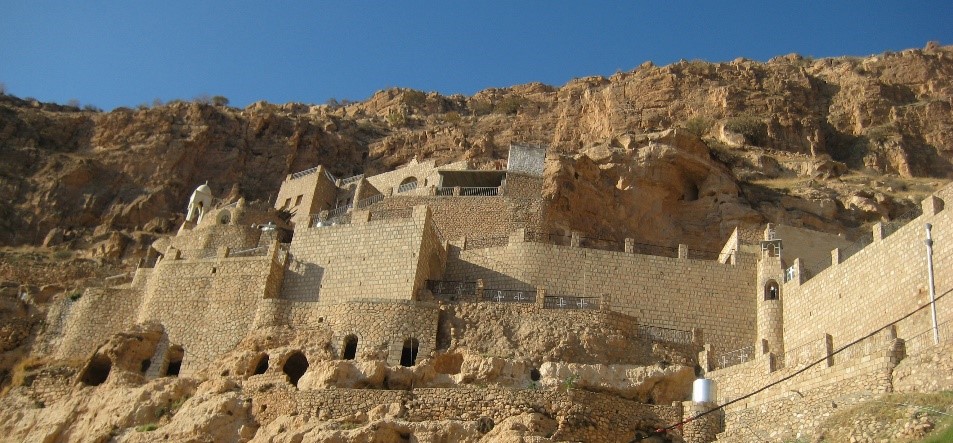
Rabban Hormizd’s monastery library was rich in manuscripts in Syriac language.
Due to the attacks with the beginning of the Ottoman-Persian War the monastery was abandoned.
Rabban Hormizd Monastery is built half about half way up the range of mountains which encloses the Nineveh Plain on the north, and stands in a sort of amphitheatre, which is approached by a rocky path that leads through a narrow defile; this path has been paved by generations of monks. The church is of stone and is of a dusky red colour; it is built upon an enormous rock. In the hills round about the church and buildings of the monastery are rows of caves hewn out of the solid rock, in which the stern ascetics of former generations lived and died. The convent has neither doors nor any protection from the inclemency of the weather, and the chill which strikes into the visitor gives an idea of what those who lived in them must have suffered from the frosts of winter and the drifting rain. The cells are separate one from the other, and are approached by narrow terraces, but some of them are perched in almost inaccessible places, and, unless other means of entrance existed in former days, could only have been approached by the monks crawling down from the crest of the mountain and swinging themselves into them.
In 1859 a new monastery (Monastery of our lady protector of the crops) was erected in the plain near Alqosh.
Church and School of Mar Mikha Nohadraya (i.e. from Nohadra (the ancient Christian name of Duhok region)
Mar Mikha Nohadraya Church is one of the oldest urban and civilized edifices with its structure so far in the old town of Alqosh. Its construction coincided with the life of Mar Mikha himself when he came to this village and settled there in 414 AD.
Mar Mikha was born in the village of Banuhadra, present-day (Dohuk) in the year 309 AD.
In 415 AD, Mar Mikha built a monastery and a church with the help of the villagers.
This church included three structures, two of which were removed due to their demolition and the inability to restore them. The last date of the renovation of this church is the year 1876 AD, and it is installed on a stone slab above the niche of the Mar Mikha shrine, which is located to the right side of the altar of the church. There is another niche on the left side of it, which includes a burial for part of the remains of the prophet Nahum. The writing there reads: The Vault of Bones of the Prophet Nahum.
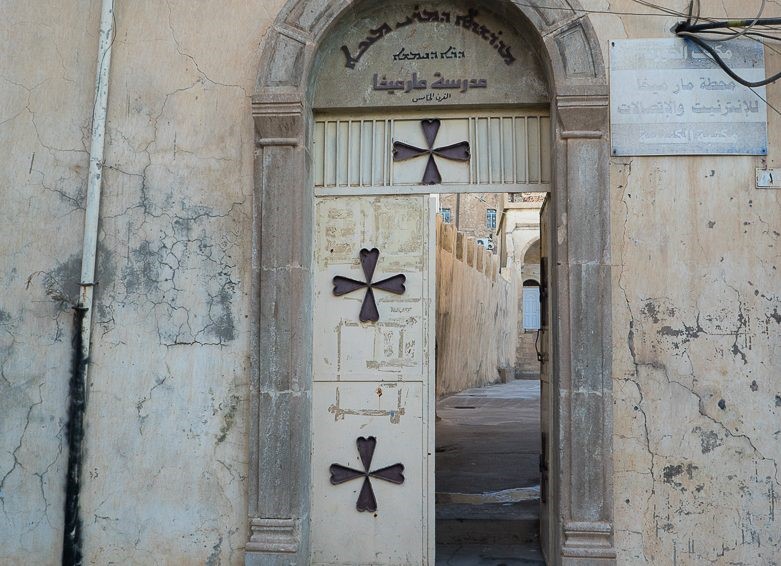
Prophet Nahum Tomb
Nahum’s tomb lies only 2 km west from the Rabban Hormizd monastery and the monastery of Our Lady of the Seeds, on a gentle slope at the foot of the limestone mountain range of Alqosh, just above the Chaldean churches of Mar Gewargis and Mar Mikha.
The ancient existence of Nahum’s mausoleum has been confirmed for a long time. According an old identification, the synagogue (and not the tomb) would date from the 12th century, but some hagiographical elements would also date it from the 10th century. The current synagogue has been restored and rebuild quite recently, at the end of the 19th century.
Both past and present travellers all relate the same fact: “the inhabitants from Alqosh all claim they possess the tomb of the prophet Nahum and his sister Sara.” Nothing indeed enables to prove the authenticity of the tomb. Only the tradition remains.
Nahum’s mausoleum is made of coated-stones, and the building is today partially dilapidated. It undoubtedly is a synagogue, with the prophet’s tomb right in its centre, and in the inner courtyard, the tomb of Nahum’s sister, Sara, as well as a religious school and a storeroom.
The building is enclosed by a surrounding wall, with several sides (west, south and east) that have collapsed.
The inner courtyard occupies more than a third of the total area. The different rooms are situated on the northern, western and eastern parts. The synagogue and its mausoleum take up the southern half of the compound.
Right after the entrance, a flight of 7 steps takes you down to the synagogue. It still has a nice architecture of coated stones. The groin vaults rest on several low and stable square pillars, whose pattern “features the 12 tribes of Israel”.
Nahum’s tomb stands right in the centre, enclosed with a thinly wrought metal fence and surrounded by the 4 central pillars, on which one can read, engraved in the stone, some Hebraic inscriptions taken from the Book of Nahum. “These inscriptions are exactly the same as these in the Torah”. The rectangle-shaped and prominent prophet’s tomb is covered with a green cloth. Two niches are arranged within the western wall of the synagogue: one for the Torah scroll and the other one for votive candles.
A roof made of sheets of metal has been built above it but offers very little protection.
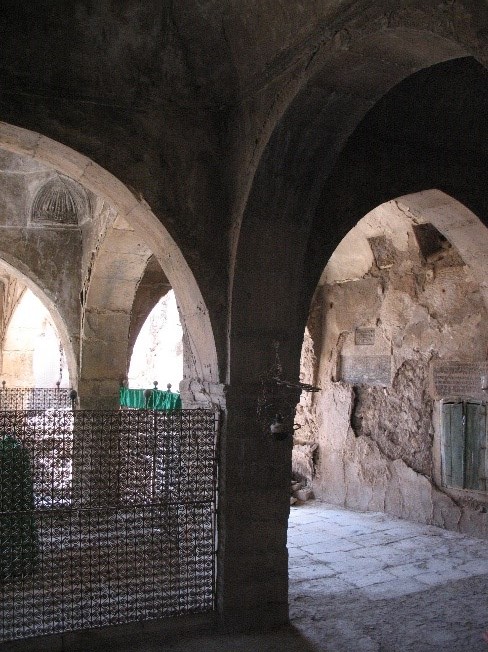
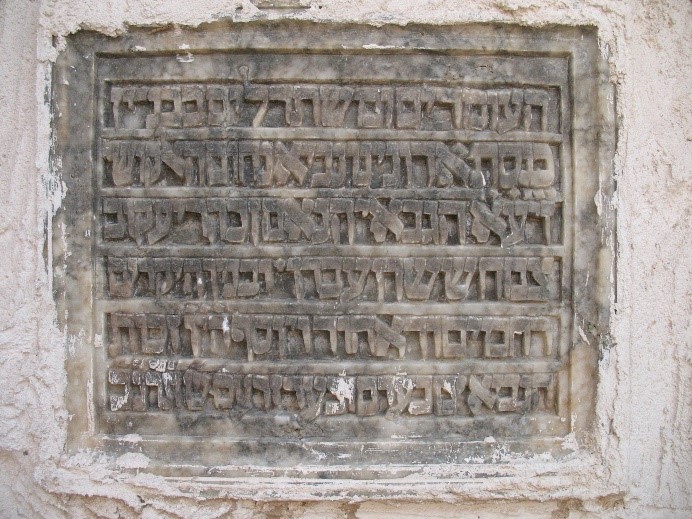
Shiro Malektha
It is the archaeological Assyrian slope that is located in the heart of the mountain valley north of the village of Bandawaya, located 7 km west of the town of Alqosh. It was carved in relief and contains a rectangular niche with dimensions of 4 m in height, 183 cm in width and 74 cm in depth, and on a gaint rock standing in the middle of the valley.
There is a prominent sculpture 124 cm long representing a man. This sculpture is attributed to the Assyrian King Senharib (704-681 BC). This king left such a sculpture in Maalthaya near Dohuk and another one in Khanas (south of Sheikhan), and in another watering project near Nineveh. The word Sheru Malektha is derived from two words, the first (Shiru) Assyrian (Sarru), meaning king, and the second (Malkatha) Syriac, meaning queen, meaning king and queen.
There is a tunnel dug under this sculpture, it is said that the Assyrian Queen Shamiram had used it to raise the water level of the river that runs in the valley to the level of the plains of the arch in the east for watering. There is also, to the southeast of the river, an extension of an earthen canal that ends to the northeast of the village of Hatara.
This channel formed the course of the ancient river through the mentioned plains, its earthen sides crumbling due to neglect and the deviation of the river’s course from it.
Prominent Alqoshians
Patriarch Yousif Audo (1793 – 1878)
Patriarch Yousif Audo served the Chaldean Church for a period of 35 years in complicated circumstances. He showed that he had a clear vision and decision-making personality.
Audo defended the unity, authenticity and rights of his church.
During his patriarchate, he made important achievements:
- The establishment of the priestly institute, the establishment of a printing house to publish books, the restoration of the properties of the Chaldean Church,
- The construction of more than 10 churches, the construction of the monastery of Our Lady near Alqosh, the ordination of 17 bishops and 150 priests
The Vatican offices treated the Eastern Churches, through the Propaganda fide, as if they were Latin dioceses. These attitudes created severe crises with the Chaldean Church regarding the selection of bishops and the authority over Malabar, India.
On January 8, 1869, Pope Pius the ninth called for First Vatican Council to study the teaching of the Church, and the Pope was declared preservation in the field of the doctrine of faith on September 20, 1870.
Eastern patriarchs participated in the council, including Patriarch Audo, who objected to preservation and the new legal measures. He boycotted the council and returned to Iraq without signing the council decisions. As a result, relations between the Patriarch and Rome got worse. Rome tried in various ways to entice the patriarch, promising him to restore his authority over the Chaldeans of Malabar, and to keep the rights, traditions and rituals as they were, provided that the patriarch signs the decisions of the council.
Finally, Patriarch Audo bowed to these promises and pressures and agreed to the council in March 1877, but Rome did not fulfill its promises.
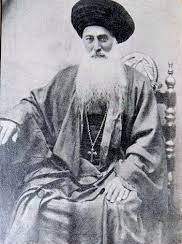
Patriarch Polus Sheikho (1906 – 1989)
He assumed the patriarchate in 1958.
He was famous for his ardor for building churches, monasteries and schools, so he built nearly forty churches, monasteries and schools.
He ordained thirty-three bishops, dozens of priests and deacons, and participated in many sessions of the Second Vatican Ecumenical Council.
When the previous regime in the seventies of the last century issued a decision to impose the teaching of the Quran on all non-muslim students, Patriarch Sheikho opposed the issue with clear, frank and strong positions, and his positions, in addition to the state of popular rejection, were a reason to stop the implementation of the decision.
Toma Thomas
Toma Thomas was born in Alqosh, in 1924, he was an adherent to the Chaldean Catholic Church. He witnessed the Simele massacre first-hand when Assyrians escaped the massacres to Alqosh. This event was crucial in shaping his political ideas in the future.
After finished elementary school in Alqosh, he moved to Mosul where he finished high school. He later found his way to Kirkuk to work at an oil company. There he joined the Iraqi Communist Party in the early 1950s.
He moved to his home town after the 1958 14 July Revolution which brought the communists to power. The situation didn’t last long however. The communists were summarily executed and some headed by Toma Tomas fled to the mountains of Kurdistan where they formed armed guerilla’s known as the Ansar and joined the Kurds in their struggle against the central government.
For almost 30 years Toma Thomas led the Ansar in many battles against the Iraqi army in the region stretching from the Turkish borders to Telkeif to the south.
He died in Syria on 15 October 1996 and was buried in Duhok.
His remains were reburied in his home town Alqosh in 2010.
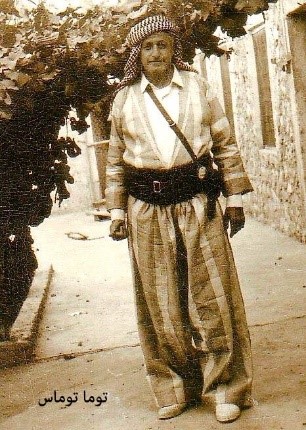
Benjamin Haddad (1931 – )
Benjamin Haddad was born in Alqosh, 01 July 1931
He worked in the field of comparative language, and was interested in history, heritage and folklore. He wrote for literary purposes in both Syriac and Arabic.
He has about thirty books, letters and publications in the aforementioned fields.
One of his most important works is (Encyclopedia of the Monasteries), a historical, geographical, scientific, and spiritual study that deals with the study of more than 1,200 existing and destroyed monasteries along the map of the ancient East (from China and Afghanistan to North Africa, from northern Asia Minor to southern Oman and Yemen). It is in 8 volumes with a total of 1700 pages.
CAPNI covered the printing costs and the copy rights of this precious work.
In addition to the (Rawd al-Kalam) dictionary, which is located in two large volumes and more than 1200 pages. It is a dictionary (Arabic – Syriac).

